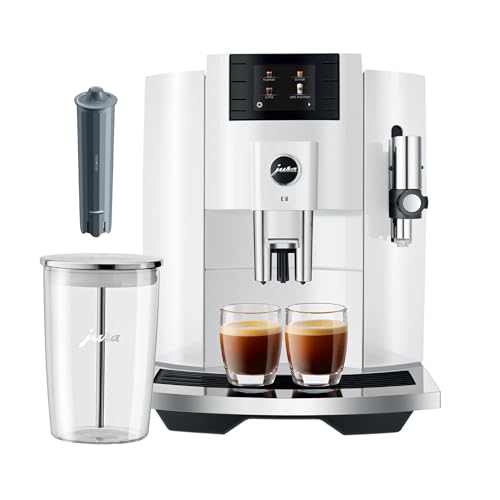Understanding the Barista’s Role
The barista’s role has dramatically changed around the world, becoming integral to coffee culture. In the past, a barista merely prepared and served coffee. Today, it involves more duties and expertise. Contemporary baristas prepare beverages and make coffee culture happen. They usually converse with customers about brewing methods, where the beans come from, and their flavors.
Key Responsibilities
The primary duty of a barista is preparing various coffee beverages. These include espresso-based coffee drinks like lattes, cappuccinos, and macchiatos, and regular drip coffee. Equipment operation, such as grinders and espresso machines, is a required skill. Knowledge of various coffee beans and how brewing methods affect the end product is equally important. Such knowledge creates a personalized coffee experience, which fosters appreciation for the craft.
Required Interpersonal Skills
Interpersonal skills are necessary for this position. Skilled baristas deal with customers, making sometimes suggestions on their drink preferences based on taste. This enhances customer satisfaction. Attention to detail ensures that each drink meets quality. Creativity comes in handy while developing new recipes or latte art. Skilled baristas appreciate coffee. This is shown through their work and shines on the environment of the café.
More Than Just Coffee
Ultimately, being a barista is about more than just brewing coffee. It’s a mix of technical competence, customer service knowledge, and vast coffee culture expertise. This two-way street of a job is all about the entire experience, inviting coffee aficionados to return.
Essential Equipment for Home Baristas
To start as a home barista, good tools for quality coffee are required. Some of the most critical ones include an espresso machine, a grinder, a milk frother, and various brewing techniques. All of them are vital for the manufacture of coffee.
Espresso Machine
An espresso machine is the hub of any home business. Manual, semi-automatic, and automatic models are available. Choose one to match your skill level and level of experience desired. Newbies will enjoy a solid balance of control and convenience from a semi-automatic model. Your budget will vary, so take that into consideration as well.
Coffee Grinder
A high-quality coffee grinder is an essential item. Freshly ground coffee beans are required for the best flavors and aromas. Burr grinders are better than blade grinders. They produce a consistent grind size, which enhances coffee extraction. When choosing a grinder, consider grind size options and capacity for your needs.
Milk Frother
A frother for milk is also required for home café beverages. Steam wands on espresso machines or stand-alone frothers help create velvety milk for cappuccinos and lattes. Manual or automatic frothers are your choice of convenience and control.
Brewing Methods and Maintenance
It is necessary to familiarize yourself with brewing. Techniques like pour-over, French press, and Aeropress produce different flavors. Experiment with these to see what you like. Cleaning and servicing your machine correctly keep it in working order for a long time and in good shape. This makes every cup enjoyable.
Learning Coffee Techniques and Recipes
Mastering techniques and recipe development is what being a home barista is all about. Every technique produces different flavors, with different tastes. Practicing these techniques greatly improves your skills.
Popular Brewing Methods
French press is very common. It steep coarse coffee in hot water to make a rich coffee. No additional equipment beyond the press is required, making it perfect for the novice. Pour-over techniques like Chemex or Hario V60 emphasize water temperature and pouring to make a clean, aromatic coffee. Espresso made under pressure is the base for lattes and cappuccinos.
Steaming Milk and Novice Recipes
The art of frothing milk is crucial for frothy beverages. Smooth milk is obtained with a steaming wand for cappuccinos or lattes. Familiarity with diverse milks (alternate, skim, whole) helps to pick the right one based on taste and dietary needs. Easy recipes like the latte (same proportion of espresso and steamed milk with foam) are perfect for beginners. Experiment with syrups, spices, or matcha lattes to achieve variety.
Online Resources and Classes
There are numerous online resources available to continue your education in coffee. Websites, videos, and eBooks offer training in brewing and recipes. Online courses provide interactive education from experts that build on your skills and coffee industry knowledge.
Building Your Coffee Knowledge and Community
Educating oneself to be a skilled home barista starts with understanding the coffee itself. This includes bean origin, coffee plant types, and roast levels. Get basic knowledge through books, coffee films, and internet coffee farming and brewing classes. Understanding the Arabica and Robusta beans, for example, greatly influences flavor.
Learning Coffee Origins
Following the history of coffee is crucial. Each region will have unique beans due to climate, soil, and processing. Knowing different coffee-producing nations broadens your enjoyment of diverse flavors. Knowing how height and fermentation affect flavor allows you to select and prepare multiple coffees.
Participation in the Coffee Community
Being a member of the coffee community can be an added learning experience. Social media is dynamic communities that share tips and experiences. Online forums and hashtags connect you with veteran baristas and newcomers. Local tastings or meetups offer firsthand learning, tasting brews and sharing techniques.
Sharing Your Coffee Journey
Sharing your experience in blogs, video, or social media opens the door to comments and companionship. Experiment with small tastings to gather feedback. Developing such connections deepens your knowledge and enthusiasm, laying a solid foundation as a proficient home barista.













[…] Start with popular origins like Ethiopia or […]
[…] The barista’s role has dramatically changed around the world, becoming integral to coffee culture. In the past, a barista merely prepared and served coffee. Today, it involves more duties and expertise. Contemporary baristas prepare beverages and make coffee culture happen. They usually converse with customers about brewing methods, where the beans come from, and their flavors. […]
[…] helpful to use a kitchen scale. While scoops and tablespoons might work in a pinch, weighing your coffee ensures consistency and precision. A basic digital scale is affordable and improves your coffee […]